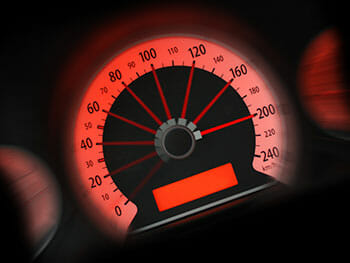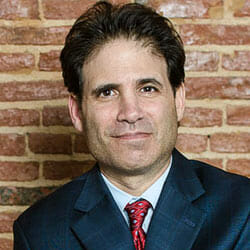Speed, Deadly Speed
 Speed truly kills. Speeding has been a contributing factor in more than one-fourth of traffic fatalities annually since 2005. In 2015, 27 percent of traffic deaths were attributed to excessive speed; the actual number was 9,557. Interestingly enough, little more than half of those fatalities—52 percent—occurred on roads where the posted speed limit was under 55 mph and not on high-speed interstates.
Speed truly kills. Speeding has been a contributing factor in more than one-fourth of traffic fatalities annually since 2005. In 2015, 27 percent of traffic deaths were attributed to excessive speed; the actual number was 9,557. Interestingly enough, little more than half of those fatalities—52 percent—occurred on roads where the posted speed limit was under 55 mph and not on high-speed interstates.
The truth is, most of us push the gas pedal too hard sometimes. In a Minnesota poll taken in early 2017, 65 percent of drivers admitted that they speed now and then for a variety of reasons.
For the year 2016, Maryland ranked 24th in a “worst drivers by state” listing. Our total traffic fatalities in 2015 were 513. We do not have figures for Maryland deaths that can be attributed to speeding.
Speeding, Road Conditions, and Stopping Distances
What is speeding? It’s defined as exceeding the posted limit, driving faster than the conditions allow, or racing on a public road. On a sunny, dry day, driving the speed limit is perfectly legal. But posted limits apply only to ideal conditions. The same speed limit that’s great while driving to a summer outing could be wildly dangerous during a snowstorm. Driving too fast for road conditions, even if you are well under the posted limit, is illegal in Maryland.
A number of road conditions require that you ease off the gas pedal, such as:
- Rain, ice, and snow
- Fog
- Roadwork
- Traffic congestion
- Road blockages due to a crash
- Driving at night.
Something else to consider: the faster you speed, the worse any resulting injuries are likely to be when you do crash, because you will strike the other vehicle or object with greater force. Speeding can also mean the difference between hitting and avoiding a pedestrian or bicyclist. Your vehicle’s stopping distance increases with your speed, and also when the road’s surface is wet or slippery.
Stopping distance is defined as your “reaction distance” plus the distance it takes the brakes to stop your vehicle. Here’s an example: If you are driving at 60 mph, your reaction distance—the distance it takes your brain to realize you need to hit the brakes hard—is 132 feet. The actual distance it takes the brakes to stop your vehicle is 180 feet. That’s a total of 312 feet, or slightly more than the length of a football field. This is an average figure, so the stopping distance will vary with the person and the vehicle. Heavier vehicles need more distance to come to a stop. The stopping distance is also calculated for ideal conditions, so you will need more, maybe much more, distance to stop when it’s raining—or if you aren’t paying attention because you are fiddling with your phone.
Maximum Speed Limits
In Maryland, the maximum speed limit on an interstate is 70 mph, but most of our interstates are posted at 65 mph, with only a few roadway areas set at 70. Other Maryland maximum speed limits include:
- 30 mph on undivided highways in residential and business areas
- 35 mph on divided highways in residential areas
- 50 mph on undivided highways in non-residential areas
- 55 mph on divided highways in non-residential areas.
Speeding and Aggressive Driving
Speeding is the most common behavior classified as aggressive driving, and speeding often leads to other aggressive actions behind the wheel. Maryland’s aggressive driving law states that, if you commit at least three of the following traffic offenses “in close proximity” on the road, you can be pulled over and fined:
- Speeding
- Disregarding traffic signs or signals
- Not yielding the right of way
- Passing another vehicle on the right
- Passing another vehicle in an unsafe manner
- Tailgating (following too closely)
- Driving in any way that’s improper for a road with lanes.
A Need to Speed?
Why do we speed when we know how deadly it is? Drivers have a lot of excuses, including “I like it.” Perhaps it’s human nature to do as we wish; speeding, if you’ve never been in a serious crash, might even seem harmless. But, as the statistics show, speeding is not without hazards.
The National Highway Traffic Safety Administration (NHTSA) has come up with the most frequent reasons we speed:
- The driver is in a hurry or under pressure to get somewhere.
- The driver is upset, angry, frustrated, or otherwise feeling emotionally out of sorts.
- Traffic is congested, which has been shown to trigger impulses to speed or drive aggressively.
- The driver is distracted.
- The driver is under the influence of alcohol or drugs, which impair judgment.
- The driver receives a thrill from speeding.
- The driver wants to speed “because they can.”
How Can I Avoid Speeding?
Because nearly everyone speeds occasionally, and because speeding can have deadly consequences, it pays to modify our behaviors. If you are serious about not speeding while driving, we have the following suggestions:
- Try not to let your emotions (anger, worry, etc.) get the better of you and your driving habits. Relax behind the wheel if you can.
- Leave early if you must arrive someplace on time, such as at work. Try not to react by speeding if you know you’re going to be unavoidably late.
- Don’t drive under the influence, which impairs judgment.
- Consider stopping distances and the road’s surface as an aid to reminding yourself not to speed.
- Don’t tailgate or engage in other aggressive behaviors that might prompt speeding.
- Pay attention to your driving and avoid distraction by other things, such as your phone, the vehicle’s entertainment system, the kids, or conversation with others.
- Use cruise control, where possible, to help you resist the urge to speed by taking the decision out of your hands.
- If you are motivated by money, consider the costs of speeding, such as ticket costs and increased insurance costs.
Drivers who speed should be held accountable for their actions. If you or a loved one has been seriously harmed by a speeding-related crash, it’s possible that you are entitled to compensation for injuries or losses. Seeking legal counsel could be a wise choice. Contact us for a free consultation.

Attorney Steve Heisler
Steve Heisler decided in 1996 that he was going to focus his law practice exclusively on injury cases. Since then, he has been representing injured people against insurance companies, disreputable medical practitioners and Big Pharma, and doing it with compassion, honesty and level-headed rationality. [ Attorney Bio ]


